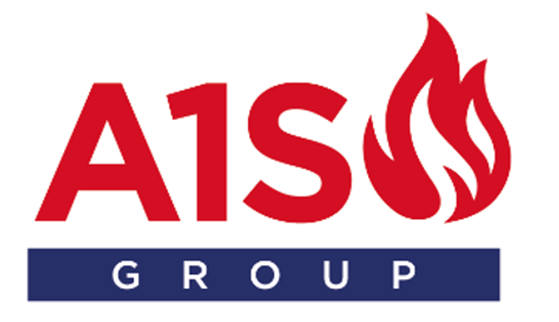A1S Group to launch 30th Anniversary BS 8524 Fire Curtain and Fire and Smoke Curtain Offer
With a 2018 investment of over £120,000 in research, development, production capacity, and a challenging but finally successful testing programme to BS 8524 with Warrington Exova, the A1S Group is to announce a 30th anniversary offer to capitalise on the increased requirement for fire curtains and fire and smoke curtains to the now often mandatory British Standard BS 8524-1.
With the stipulation in BS 9999 2017 that fire curtains and fire and smoke curtains should be tested in accordance with BS 8524-1 and installed to BS 8524-2, fire curtains are now designed to better withstand the rigours of real life applications, with an increased emphasis on durability, cyclic testing, surface spread of flame, impact testing and a motor that has been furnace tested to 400 degrees to exacting standards.
Documented specification standards now ensure that both integrity and radiation performance is considered and attention to substrate and parameter guidelines is much more transparent. Head of A1S Group Sales Paul Caldwell-Jones - paul@a1shutters.co.uk - has seen a significant improvement in the wider fire industry understanding of fire curtain performance.
“Since the publication of BS 8524-1 and BS 8524-2, and its comprehensive guidance for the specification, testing, production and installation of fire curtain and smoke curtains I have seen enhanced product understanding from Fire Engineers and Quantity Surveyors. Mercifully, the days of being asked for a fire curtain or fire and smoke curtain, without a fire strategy report or an explanation of relevant fire resistance requirements and site specific conditions, are becoming if not a distant memory, at least rarer. BS 8524-1 and BS 8524-2 are certainly helping move the wider construction industry towards a fuller understanding of life safety fire curtains and as part of our 30th anniversary, our A1S Group marketing team will be launching a pricing offer for bonafide BS 8524 projects with accredited fire strategy reports.”
THE OFFER IS OUT. THE A1S GROUP WILL BEAT ANY BONAFIDE BS8524 QUOTE IN THE UK IN 2018-2019
A1S Group to Exhibit Fire Curtains and Fire Shutters at Big 5 in Dubai.
The A1S Group will be exhibiting at the Big 5 in Dubai on the 26th, 27th 28th and 29th November 2018. Mark Dougill, A1S Group Export Manager sees this must attend Regional Exhibition as the perfect opportunity to grab further market share in the UAE fire curtain and fire shutter market place. “The Big 5 is a fantastic opportunity to build on our UK success and meet prospective Distributors and Channel Partners for our Flameshield Fire Curtain and Fire Shutter range.” Recent testing success with Warrington Exova has led to a significant jump in UK market share, particularly with Supply and Install Fire Curtain Projects. “Our increased manufacturing capacity now allows us to supply our Export Partners with industry winning lead times, and that is the message I want to get across to our customers and prospective customers in the UAE,” said Mark.
Come and see us at Stand SS1 E143, Sheikh Saheed Hall no 1, next to International Fire Consultants.
Appointments can be made to discuss projects, distributorships and partnerships with Mark directly on 0044 7826598246. or markdougill@a1shutters.co.uk
Revised Guidelines For Fire Curtains in BS 9999 (2017)
BS9999 – 2017 Fire Safety in the design, management and use of buildings – Code of Practice.
BS9999 – 2017 Fire Safety in the design, management and use of buildings – Code of Practice.
This document replaced the BS 9999 – 2008 document and is concerned with an “Advanced Approach” to fire safety within building design. One of the fundamental revisions in the 2017 document is the addition of guidelines for fire curtain barrier assemblies and the fundamental stipulations are as follows:
Active fire curtain/barrier assemblies in buildings should be self-closing under
gravity (gravity fail safe). They should be tested and installed in accordance
with BS 8524-1 and BS 8524-2 respectively, and should:
a) Be initiated by an appropriate automatic fire detector;
b) Be capable of multi-stage deployment to act initially as a smoke barrier
relevant to the risk, where deemed necessary;
c) Have emergency retract controls relevant to the risk;
d) Have obstruction warning devices or floor markings dependent upon the
location; as a rule of thumb, all escape routes should have either a single beam or light curtain obstruction warning.
e) Have controls and associated wiring that is appropriate to the risk and type;
f) Have deployment speeds ranging between 0.06 m/s and 0.15 m/s;
g) Achieve the same standard of fire resistance and smoke separation as the
element of structure being replaced;
h) Have monitoring of the battery condition;
i) Have display panels having visual and audible provision to:
1) Indicate any faults.
2) Indicate if the batteries (for emergency retract) need replacing.
When fire curtain barriers are used to protect a means of escape route:
1) The escape route width should be increased by the stated deflection zone.
2) The maximum length of an uninsulated barrier forming the protected route
shall not exceed 5 m. There are however exceptions to this with a Fire Engineered approach which is outside of the scope of BS 9999 2017.



